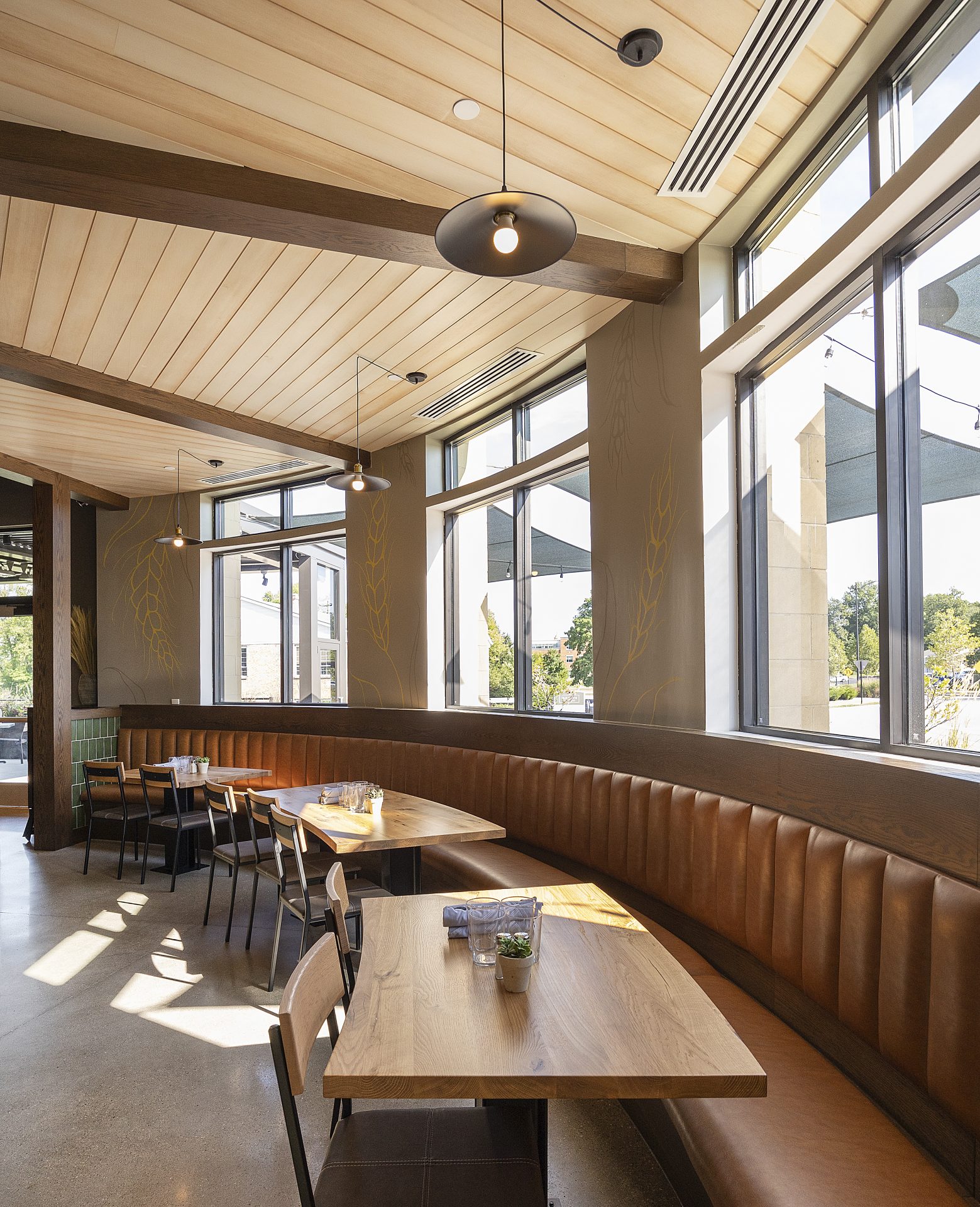Usher in Light and Style with Transom or Mullioned Windows
When designing commercial spaces, every detail counts. Windows, for instance, can have a significant impact on the aesthetics, functionality and comfort level of your business environment, providing natural light, ventilation and visual appeal.
Transom and mullioned windows are two types of windows that are popular for their distinct features and decorative elements. In this blog, we’ll review their characteristics and cover design aspects to consider when incorporating architectural millwork in your next window project.
A Clear Understanding

Typically positioned above a door or another window, transom windows allow natural light, and in some cases airflow, to enter the room. They can be stationary or operable and come in different shapes such as rectangular, curved or arched. (A transom is the bar separating the transom window from whatever is beneath, usually a door or additional window.) Transom windows are best suited for spaces with high ceilings, such as lobbies or conference rooms, as they welcome light into the room while maintaining privacy, if desired.
Mullioned windows feature a series of vertical or horizontal bars known as muntins, located on the glass itself, that divide the window into smaller sections. A mullion is the vertical shaft positioned in between the windows.
Mullioned windows are often utilized in commercial buildings as they add a decorative touch to the building’s facade or interior. Custom millwork can be employed to create a unique design, such as geometric or floral shapes or even logos, helping businesses express their personality and reinforce brand identity.
Design Aspects to Consider

When considering incorporating architectural millwork into transom and mullioned windows, there are different design aspects to consider. One of the most essential aspects is the overall style of the building. The millwork should complement the building’s architecture and fit seamlessly with the surrounding structures.
Another important consideration is the desired level of sophistication. The level of detail in the millwork determines the level of emotion it can evoke, and the intended emotion should align with the brand or culture of the business. For example, a high-end luxury brand might use intricate, ornate millwork, while a more contemporary brand might use simpler, geometric designs.
The functionality of the transom or mullioned window should be factored in to decision making. Transoms can be used for ventilation, while mullioned windows can help bring natural light to a dimly lit interior. Are they intended to add natural light to the space or are they simply decorative? If the former, it’s important to consider how the windows will affect the overall temperature and energy efficiency of the building.
Budget and maintenance are additional considerations that should not be overlooked. Certain types of millwork can be more expensive than others, and the level of maintenance required can affect the long-term cost. The material used in the millwork can also influence the product’s lifespan, with some being more durable than others.
When Transom and Mullioned Windows May Not Be Best
Transom and mullioned windows are not always the best choice for every commercial space. These window types may not be appropriate for buildings that require complete privacy or where sunlight control is necessary.
Windows that provide a picturesque view of the exterior environment may not require transoms or mullioned windows; using them could undesirably obstruct the view or reduce the amount of natural light that enters the room.
In such cases, the use of traditional windows or window treatments is likely a better option.
How Myers Architectural Millwork Can Help
Myers Architectural Millwork is a regional leader in crafting custom millwork solutions such as transom and mullioned windows, offering aesthetic unity and function across offices, hotels, restaurants and more.
Considering a commercial remodel or new build? Our experienced staff are available to help you assess the best approach for your next project. Contact us today and learn more about how our creative results can transform your space!